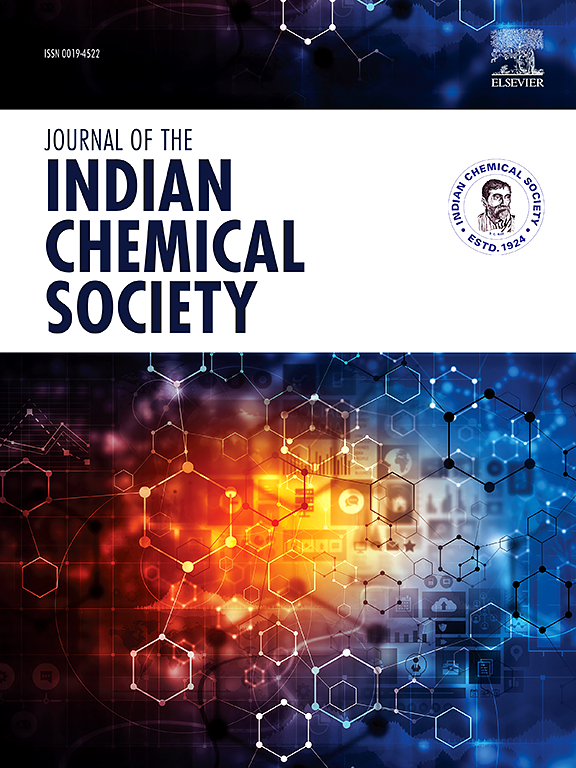Synthesis, biological evaluation and molecular modeling studies of quinazolin-4(3H)-one and benzenesulfonamide hybrids as potential anticancer agents
IF 3.2
4区 化学
Q2 CHEMISTRY, MULTIDISCIPLINARY
引用次数: 0
Abstract
Cancer is a life-threatening disease that affects millions globally; however, a sufficient number of potent and selective chemotherapeutic drugs are still unavailable. For this reason, researchers are conducting studies to develop new selective compounds with anticancer activity. Some of these studies have focused on quinazolin-4(3H)-one core compounds designed by molecular hybridization. Inspired by this, a series of quinazolin-4(3H)-one and benzenesulfonamide hybrids were synthesized and evaluated for their antiproliferative and cytotoxic activities using human non-small cell lung (A549), human liver (HepG2), and human breast (MCF-7) cancer cell lines, as well as a normal human lung fibroblast (CCD-34) cell line in this study. Additionally, molecular modeling studies were performed to determine the interaction mode against epidermal growth factor receptors (EGFRs) as a plausible mechanism of anticancer activity of quinazoline and some quinazolin-4(3H)-one compounds. According to the biological activity results, a significant number of compounds with strong antiproliferative activity against various cancer cell lines, along with an acceptable selectivity rate, were identified. In particular, compound 3, which bears a 2-phenylethyl group on the sulfonamide nitrogen, exhibited more potent and selective antiproliferative activity against the human liver cancer cell line (IC50 < 12.5 μM, SI > 16) compared to the reference drug doxorubicin (IC50 = 25.37 μM, SI > 1.57). The molecular modeling study indicated that the relatively active compounds have the potential to interact with EGFR target. These results suggest that quinazolin-4(3H)-one and benzenesulfonamide hybrids may serve as lead compounds in the discovery of novel anticancer agents for the treatment of various malignancies.

喹唑啉-4(3H)- 1和苯磺酰胺复合物的合成、生物学评价和分子模型研究
癌症是一种危及生命的疾病,影响着全球数百万人;然而,仍然没有足够数量的强效和选择性化疗药物。因此,研究人员正在进行研究,以开发具有抗癌活性的新型选择性化合物。其中一些研究集中在喹唑啉-4(3H)-一种通过分子杂交设计的核心化合物。受此启发,本研究利用人非小细胞肺(A549)、人肝(HepG2)、人乳腺(MCF-7)癌细胞系以及正常人肺成纤维细胞(cd -34)细胞系,合成了一系列喹唑啉-4(3H)- 1和苯磺酰胺杂合体,并对其抗增殖和细胞毒活性进行了评价。此外,通过分子模拟研究确定了喹唑啉和一些喹唑啉-4(3H)- 1化合物与表皮生长因子受体(EGFRs)的相互作用模式,这可能是喹唑啉和一些喹唑啉-4(3H)- 1化合物的抗癌活性机制。根据生物活性结果,确定了大量对各种癌细胞具有较强抗增殖活性的化合物,并且具有可接受的选择性率。特别是,在磺胺氮上含有2-苯基乙基的化合物3,对人肝癌细胞系表现出更强的选择性抗增殖活性(IC50 <;12.5 μM, SI >;16)与参比药阿霉素(IC50 = 25.37 μM, SI >;1.57)。分子模拟研究表明,相对活性的化合物具有与EGFR靶点相互作用的潜力。这些结果表明,喹唑啉-4(3H)- 1和苯磺酰胺杂合物可作为先导化合物,用于发现治疗各种恶性肿瘤的新型抗癌药物。
本文章由计算机程序翻译,如有差异,请以英文原文为准。
求助全文
约1分钟内获得全文
求助全文
来源期刊
CiteScore
3.50
自引率
7.70%
发文量
492
审稿时长
3-8 weeks
期刊介绍:
The Journal of the Indian Chemical Society publishes original, fundamental, theorical, experimental research work of highest quality in all areas of chemistry, biochemistry, medicinal chemistry, electrochemistry, agrochemistry, chemical engineering and technology, food chemistry, environmental chemistry, etc.

 求助内容:
求助内容: 应助结果提醒方式:
应助结果提醒方式:


